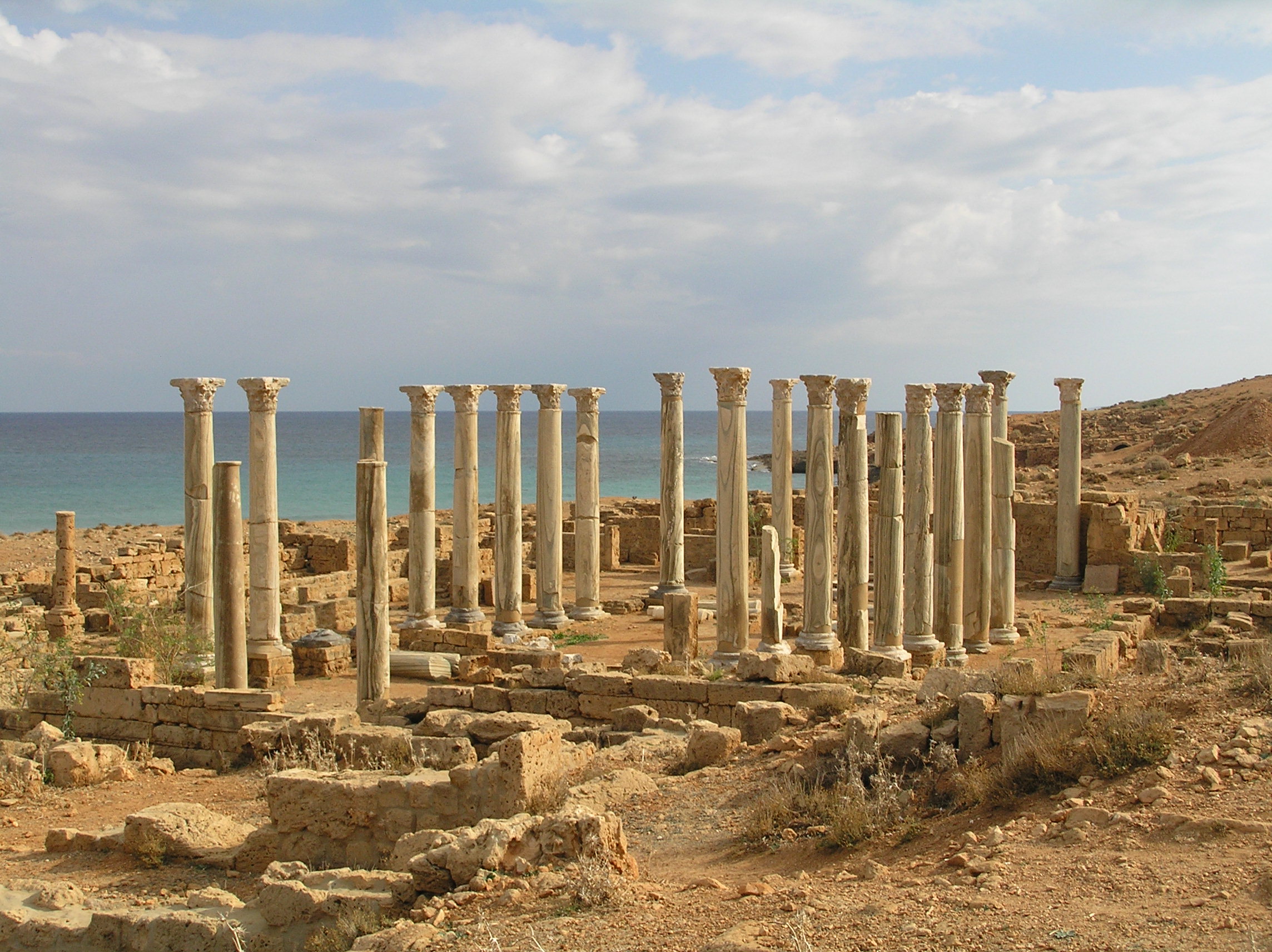Apollonia, nestled in the region of Cyrenaica in Libya, stands as a testament to the ancient world’s grandeur. This historical site, once a thriving port city of the Greek colony of Cyrene, boasts a rich tapestry of history dating back to its founding in the 7th century BC. Overlooking the Mediterranean Sea, Apollonia was a beacon of Hellenistic culture, later becoming an important Roman city. Its ruins, including temples, a theater, and Byzantine churches, offer a glimpse into its storied past. The city’s strategic location and natural harbor contributed to its significance in ancient trade networks.
Get your dose of History via Email
Historical Background of Apollonia (Cyrenaica)
Apollonia, the ancient port of Cyrene in Libya, was discovered by archaeologists in the early 20th century. Its founding dates back to the 7th century BC by Greek settlers. The city’s name, derived from the god Apollo, reflects its Greek origins. Over time, Apollonia saw various inhabitants, including the Romans, who left a lasting architectural imprint. It was also the scene of significant historical events, such as the Jewish revolt in 115 AD.
The city’s builders, the Greeks from the island of Thera, capitalized on the fertile lands and strategic location. They established Apollonia as a central hub for commerce and culture. The city’s growth continued under Roman rule, becoming the capital of Cyrenaica. Its harbors were bustling with trade, linking it to the broader Mediterranean world.
Later, Apollonia witnessed the rise of Christianity and the Byzantine Empire’s influence. The city’s churches and religious structures from this era remain as evidence of its religious significance. However, the Arab conquest in the 7th century marked the decline of Apollonia, leading to its eventual abandonment.
Despite its fall, Apollonia’s historical importance is undeniable. It was a melting pot of cultures and a witness to the ebb and flow of empires. The city’s ruins, excavated by Italian archaeologists, have revealed a rich history that spans over a millennium. These excavations have provided valuable insights into the life and times of ancient Apollonia.
Today, Apollonia is a significant archaeological site, attracting scholars and tourists alike. Its well-preserved theaters, public baths, and residential areas offer a window into the past. The city’s legacy continues to be a subject of fascination for historians and archaeologists around the world.
About Apollonia (Cyrenaica)
Apollonia’s ruins reveal a city built with precision and artistry. The Greeks laid the foundation, employing local stone and imported marble for construction. The city’s layout reflects the classical Greek style, with a grid pattern of streets and public spaces. Roman additions include baths, villas, and a forum, showcasing the blend of cultures.
The city’s most striking feature is its theater, carved into the hillside with a view of the sea. The theater’s design is a testament to the Greeks’ engineering prowess. The Romans later expanded it, reflecting their love for entertainment and public spectacles.
Apollonia’s harbor was once a bustling center of trade. Its docks and warehouses stored goods from across the Mediterranean. The city’s walls, still partially standing, speak to its need for defense against invaders and pirates.
Christianity’s rise brought new architectural elements to Apollonia. The Byzantine churches, with intricate mosaics and religious iconography, mark a significant shift in the city’s cultural landscape. These structures highlight the city’s role as a religious center during the Byzantine era.
Archaeological excavations have unearthed residential areas, providing a glimpse into daily life in Apollonia. Homes with courtyards, intricate floor mosaics, and private baths suggest a community that valued comfort and aesthetics.
Theories and Interpretations
Apollonia’s purpose and significance have been the subject of various theories. Some suggest it was primarily a commercial hub, while others emphasize its religious and cultural roles. The city’s temples, dedicated to Greek gods, indicate a strong religious presence.
Mysteries surround Apollonia, such as the exact nature of its decline. Some attribute it to natural disasters, while others point to economic or political factors. The city’s abandonment remains a topic of debate among historians.
Interpretations of Apollonia’s ruins often rely on matching them to historical records. This process has helped to date structures and understand their uses. For example, the theater’s design suggests it hosted dramatic performances and public gatherings.
Dating of Apollonia’s ruins has employed methods like stratigraphy and radiocarbon dating. These techniques have helped establish a timeline for the city’s construction, use, and eventual decline.
Theories about Apollonia continue to evolve as new discoveries are made. Each excavation brings the potential to reshape our understanding of this ancient city’s life and significance.
At a glance
Country: Libya
Civilization: Greek, later Roman and Byzantine
Age: Founded in the 7th century BC
Conclusion and Sources
For further reading and verification of the information provided, the following reputable sources were consulted:
- Wikipedia: https://en.wikipedia.org/wiki/Apollonia_(Cyrenaica)“`

